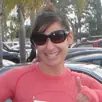According the Centers for Disease Control and Prevention (CDC), children and adolescents should do at least 60 minutes of physical activity every day. Your children can break up their activities throughout the day, but it's important for their health to get moving. Physical activity helps them build balance, strength and coordination. Studies show physical activity helps children stay focused in school.
This doesn't mean you need to go sign your child up for a team sport or fitness class. But, you should try to introduce some new activities into your child's life. Instead of the same old activities like: hiking, walking or swimming; why not introduce the following three activities to your kids.
- Cycling
- In-line skating
- Skateboarding
Before your child heads out, here are some safety tips to go over.
Cycling
Buy the right size bike. The bike should not be too big or complicated for your child to handle. A good rule of thumb when sizing your children to a bike is that the balls of their feet should reach the ground when they sit on the bike seat. If your kids lose balance they will be able to place their feet onto the ground more easily. Also, make sure your child's bike has a bell or horn. It might seem annoying to you, but this will let cars know they are nearby. If your child is in trouble they can ring the bell or horn to let you or others know something has happened.Buy the right helmet. It's imperative that your child wears a helmet when he or she rides their bike-a helmets save lives. A helmet may cost $13 to $70, and may prevent an emergency room visit or traumatic head injuries. When you shop for a helmet, make sure it is approved by the American National Standards Institute (ANSI), the American Society for Testing and Materials (ASTM) and the US Consumer Product Safety Commission (CPSC). Make sure the size is a perfect fit for your child. Some helmets are multi-sport helmets, but a bike helmet is specifically designed for cycling and will help protect your child's head better. Make sure the helmet does not move around the head and the straps are snug. You should be able to fit one finger through the chin strap when your child's mouth is closed, and the chin strap should be snug when their mouth is open.
Go over road safety. Review traffic rules with your children before they hop on their bike. Inform them to always look left, right and left again to check for cars before they make any turns or cross intersections. Once the road is clear, it's safe for your children to enter. Let them know to ride on the far right side of the road and with traffic. Your child needs to obey all tragic lights and stop signs. Your children should wear bright colors so they're visible to cars, especially at night. It's a good idea to have a rear light too.



